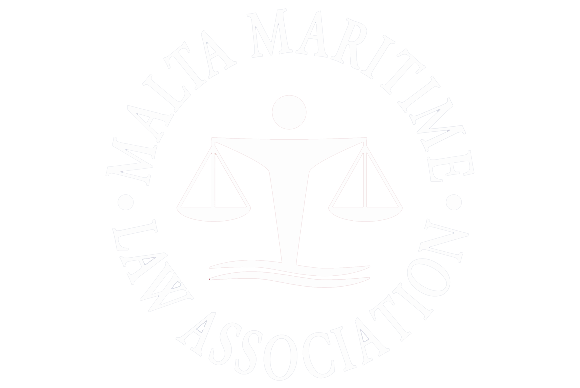International Women’s Day is an opportunity to celebrate women’s achievements in various different sectors of society.
The emancipation of women in Malta has been a long and ongoing process, marked by several significant milestones. Since Malta gained its independence in 1964, significant efforts have been made to promote gender equality and empower women.
In 1991, the Maltese government ratified the United Nations Convention on the Elimination of all Forms of Discrimination Against Women (CEDAW), which requires states to ensure women’s equal rights and opportunities in political, economic, social, and cultural spheres.
Since then, various legislative and policy reforms have been introduced to advance women’s rights and participation in society. However, despite these developments, there are still challenges facing women in Malta, particularly in areas such as employment.
In Malta, employment law is regulated principally by the Employment and Industrial Relations Act (EIRA), Chapter 452 of the Laws of Malta. This Act ensures that women are given the same employment opportunities as men. The Employment and Industrial Relations Act in fact prohibits discrimination on the basis of gender, marital status, pregnancy, maternity leave, and family responsibilities.
This is reflected through Part IV of the Act whereby article 26 which prohibits discriminatory treatment when advertising or offering employment or in regard to employees already in the employment of the employer. The law in sub-article (2) provides a non-exhaustive list of discriminatory treatment including the engaging or selection of a person who is less qualified than a person of the opposite sex, actions against an employee, less favorable than those applied to an employee in the same work or work of equal value or where an employee is assigned a clearly less favorable status than others. Furthermore, Article 27 provides thatemployees in the same class of employment are entitled to the same rate of remuneration for work of equal value and any distinction based on discriminatory treatment otherwise than in accordance with the provisions of this Act or any other law shall be null and of no effect.
The Equal Treatment in Employment Regulations, Subsidiary Legislation 452.95 further reinforces on the main act to ensure that all individuals are treated fairly and equally in the workplace. The regulations in fact prohibit discrimination on the grounds of age, sex, gender identity, sexual orientation, family status, race, religion or belief, and disability. It requires employers to provide equal access to employment opportunities, training and education, promotion, and benefits.
Article 3A of the regulations states that it shall be the duty of the employer to ensure that for the same work or for work to which equal value is attributed, there shall be no direct and indirect discrimination on grounds of sex with regard to all aspects and conditions of remuneration. Furthermore, the employer shall ensure, in particular, that where a job classification system is used for determining pay, it shall be based on the same criteria for both men and women and so drawn up as to exclude any discrimination on grounds of sex
These Regulations also prohibits harassment and sexual harassment in the workplace, such as unwelcome comments or conduct that create an intimidating, hostile, or offensive work environment. Employers must take steps to prevent and address harassment complaints and provide employees with a safe and respectful workplace.
Maternity leave
In discussing the protection of maternity, one has to refer to Subsidiary legislation 452.91 which is also the result of a European source. It does not impose the number of maternity leave which is a period of paid or unpaid absence from work due to the birth of a child, but European social policy protects it and makes maternity a shared responsibility so to speak with the employer. The law itself defines a pregnant employee as an employee who informs her employer in writing of her pregnancy and who subsequently, within fifteen days, formally informs her employer of her pregnancy and of the expected date by means of a certificate issued by a registered medical practitioner or midwife. Furthermore, the employer is obliged to give the pregnant employee a safe-working environment, besides other concessions related to time and wages and as provided by Article 3 (2). If it is impossible to adjust the work environment to accommodate the pregnant employee, then special maternity leave comes into play.
Therefore, as provided by Article 6 (1)which regulates maternity leave a pregnant employee may avail of an uninterrupted period of 18 weeks with full pay after notifying her employer in writing as provided by Article 8 of the date when she intends to avail herself of such entitlement at least four weeks before its commencement, in so far as is reasonably practicable.
Furthermore, the law also protects the female pregnant employee for ante natal visits during the pregnancy and if such visits take place during hours of work, that employee is entitled to time off without any loss of pay or benefits as provided by Article 9. Also, probation is suspended pending maternity and then continued after the period of maternity leave.
The Work-Life Balance for Parents and Carers Regulations
The Work-Life Balance for Parents and Carers Regulations, Subsidiary Legislation 452.125 was introduced in 2022 to support parents and carers in achieving a better work-life balance. These regulations aim to create a more family-friendly environment that allows parents and carers to better manage their work and family responsibilities.
The regulations apply to both men and women, but they can have a significant impact on women as they are often the primary caregivers of children and elderly relatives. The new measures include provisions such as parental leave, breastfeeding breaks, and flexible working arrangements, which can help women balance their work and family commitments.
Parental leave:
Women can take parental leave of up to four months, which can be taken until the child has attained 8 years of age. The first two months of parental leave is paid on grounds of child birth, adoption, fostering or legal custody, at the same rate established for the sickness benefit entitlement.
Carers Leave:
Women can avail of Carers’ leave, which is leave in respect of workers who are taking care of a relative or a person in their household, which leave will have to be a minimum of 5 days per year and which is unpaid. The carer’s leave can be availed of for a relative or a person who lives in the same household of the worker and a medical proof needs to be provided. A relative is defined as a worker’s son, daughter, parent, spouse or a partner in a civil partnership.
Flexible Working Arrangement:
Women may request flexible working arrangements to help them balance work and family life, such as work on reduced hours, teleworking, or a flexible work schedule. This flexibility is granted to employees who have children up to the age of 8 years or those who qualify as carers.
Overall, the Work-Life Balance for Parents and Carers Regulations in Malta can benefit women by allowing them to better manage their work and family responsibilities and promoting greater gender equality in the workforce.
The Equality for Men and Women Act
The Equality for Men and Women Act, Chapter 456 of the Laws of Malta was enacted in 2003 and amended in 2018. The purpose of this act is to promote equal opportunities and treatment for men and women in all areas of life, including education, employment, health, and social welfare.
Under this Act, discrimination on the basis of sex is prohibited in all areas of life, including recruitment, hiring, promotion, and training. Employers are required to ensure that male and female employees receive equal pay for equal work, and equal opportunities for career advancement and training.
The Act also promotes gender equality in education, ensuring equal access and opportunities for both boys and girls. It prohibits discrimination against pregnant women and women who have recently given birth, and requires employers to provide them with appropriate support and facilities.
The Act establishes the Commission for Gender Equality, which is responsible for promoting gender equality and monitoring compliance with the act. It also provides for complaints and investigation procedures for cases of discrimination.
Overall, the Equality for Men and Women Act seeks to promote gender equality in all areas of life and ensure that both men and women have the same opportunities and rights.
Malta has taken several steps to promote gender equality in the workforce, and women’s day in Malta employment is an occasion to highlight the progress made so far and the challenges yet to be addressed. Women’s Day in Malta is an important occasion to acknowledge women’s contributions to the workforce. While progress has been made, there is still much work to be done to ensure equal opportunities for all.
For more information you can contact one of our Team Members at Mifsud & Mifsud Advocates.










